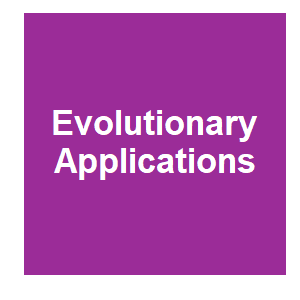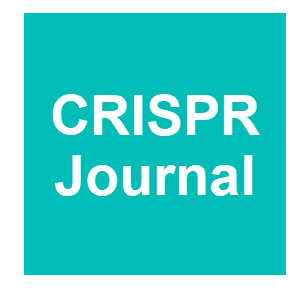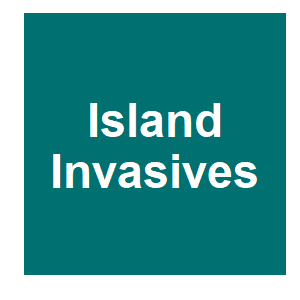
Keywords: mus-musculus

|
Meiotic drive in house mice: mechanisms, consequences, and insights for human biologyU. P. Arora and B. L. Dumont, Chromosome Research, 2022.
Meiotic drive occurs when one allele at a heterozygous site cheats its way into a disproportionate share of functional gametes, violating Mendel's law of equal segregation. This genetic conflict typically imposes a fitness cost to individuals, often by disrupting the process of ... Keywords: centromeric drive, chromosomal variation, conflict, gene drive genetics, gene drive mechanism, gene drive natural, Genetics &, house mouse, mammals, meiotic drive, mus-musculus, rearrangements, speciation |

|
Experiments confirm a dispersive phenotype associated with a natural gene drive systemJ.-N. Runge and A. K. Lindholm, Royal Society Open Science, 8:202050. 2021.
Meiotic drivers are genetic entities that increase their own probability of being transmitted to offspring, usually to the detriment of the rest of the organism, thus ‘selfishly’ increasing their fitness. In many meiotic drive systems, driver-carrying males are less ... Keywords: centromeric drive, chromosomal variation, conflict, gene drive genetics, gene drive mechanism, gene drive natural, Genetics &, house mouse, mammals, meiotic drive, mus-musculus, rearrangements, speciation |

|
Population genomics of invasive rodents on islands: Genetic consequences of colonization and prospects for localized synthetic gene driveK. P. Oh, A. B. Shiels, L. Shiels, D. V. Blondel, K. J. Campbell, J. R. Saah, A. L. Lloyd, P. Q. Thomas, F. Gould, Z. Abdo, J. R. Godwin and A. J. Piaggio, Evolutionary Applications, 2021.
Here we used pooled whole-genome sequencing of invasive mouse (Mus musculus) populations on four islands along with paired putative source populations to test genetic predictions of island colonization and characterize locally fixed Cas9 genomic targets. Patterns of variation ... Keywords: centromeric drive, chromosomal variation, conflict, gene drive genetics, gene drive mechanism, gene drive natural, Genetics &, house mouse, mammals, meiotic drive, mus-musculus, rearrangements, speciation |

|
Progress Toward Zygotic and Germline Gene Drives in MiceC. Pfitzner, M. A. White, S. G. Piltz, M. Scherer, F. Adikusuma, J. N. Hughes and P. Q. Thomas, The CRISPR Journal, 3:388-397. 2020.
Here, we investigated the efficiency of CRISPR-Cas9-based gene drives in Mus musculus by constructing "split drive" systems where gRNA expression occurs on a separate chromosome to Cas9, which is under the control of either a zygotic (CAG) or germline (Vasa) promoter. Keywords: centromeric drive, chromosomal variation, conflict, gene drive genetics, gene drive mechanism, gene drive natural, Genetics &, house mouse, mammals, meiotic drive, mus-musculus, rearrangements, speciation |

|
Development of zygotic and germline gene drives in miceC. Pfitzner, J. N. Hughes, M. A. White, M. Scherer, S. G. Piltz and P. Q. Thomas, bioRxiv, 2020.
Here we investigated the efficiency of CRISPR/Cas9-based gene drives in Mus musculus by constructing "split drive" systems with Cas9 under the control of zygotic (CAG) or germline (Vasa) promoters. Keywords: centromeric drive, chromosomal variation, conflict, gene drive genetics, gene drive mechanism, gene drive natural, Genetics &, house mouse, mammals, meiotic drive, mus-musculus, rearrangements, speciation |

|
Genetic pest management technologies to control invasive rodentsD. Kanavy and D. Threadgill, Island invasives: scaling up to meet the challenge, 2019.
Many strategies exist to manage invasive pests on islands, ranging from poison to trapping, with varying degrees of success. Genetic technologies are increasingly being applied to insect pests, but so far, not to vertebrates. We are implementing a genetic strategy to eradicate ... Keywords: centromeric drive, chromosomal variation, conflict, gene drive genetics, gene drive mechanism, gene drive natural, Genetics &, house mouse, mammals, meiotic drive, mus-musculus, rearrangements, speciation |

|
Trialling gene drives to control invasive species: what, where and how?T. Harvey-Samuel, K. J. Campbell, M. Edgington and L. Alphey, Island invasives: scaling up to meet the challenge, 2019.
The control of invasive species would be enhanced through the addition of novel, more effective and sustainable pest management methods. One control option yet to be trialled in the field is to deploy transgene-based ‘Gene Drives’: technologies which force the inheritance of ... Keywords: centromeric drive, chromosomal variation, conflict, gene drive genetics, gene drive mechanism, gene drive natural, Genetics &, house mouse, mammals, meiotic drive, mus-musculus, rearrangements, speciation |

|
Towards a genetic approach to invasive rodent eradications: assessing reproductive competitiveness between wild and laboratory miceM. Serr, N. Heard and J. Godwin, Island invasives: scaling up to meet the challenge, 2019.
House mice are significant invasive pests, particularly on islands without native mammalian predators. As part of a multi-institutional project aimed at suppressing invasive mouse populations on islands, we aim to create heavily male-biased sex ratios with the goal of causing the ... Keywords: centromeric drive, chromosomal variation, conflict, gene drive genetics, gene drive mechanism, gene drive natural, Genetics &, house mouse, mammals, meiotic drive, mus-musculus, rearrangements, speciation |

|
A potential new tool for the toolbox: assessing gene drives for eradicating invasive rodent populationsK. J. Campbell, J. R. Saah, P. R. Brown, J. Godwin, F. Gould, G. R. Howald, A. Piaggio, P. Thomas, D. M. Tompkins, D. Threadgill, J. Delborne, D. Kanavy, T. Kuiken, H. Packard, M. Serr and A. Shiels, Island invasives: scaling up to meet the challenge, 2019.
Invasive rodents have significant negative impacts on island biodiversity. All but the smallest of rodent eradications currently rely on island-wide rodenticide applications. Although signifi cant advances have been made in mitigating unintended impacts, rodent eradication on ... Keywords: centromeric drive, chromosomal variation, conflict, gene drive genetics, gene drive mechanism, gene drive natural, Genetics &, house mouse, mammals, meiotic drive, mus-musculus, rearrangements, speciation |

|
Centromere strength provides the cell biological basis for meiotic drive and karyotype evolution in miceChmatal, L., S. I. Gabriel, G. P. Mitsainas, J. Martinez-Vargas, J. Ventura, J. B. Searle, R. M. Schultz and M. A. Lampson, Current Biology, 24:2295-2300. 2014.
Mammalian karyotypes (number and structure of chromosomes) can vary dramatically over short evolutionary time frames [1-3]. There are examples of massive karyotype conversion, from mostly telocentric (centromere terminal) to mostly metacentric (centromere internal), in 102-10 s ... Keywords: centromeric drive, chromosomal variation, conflict, gene drive genetics, gene drive mechanism, gene drive natural, Genetics &, house mouse, mammals, meiotic drive, mus-musculus, rearrangements, speciation |

Contact
David O’Brochta
Foundation for the
National Institutes of Health
geneconvenevi@fnih.org
RSS

